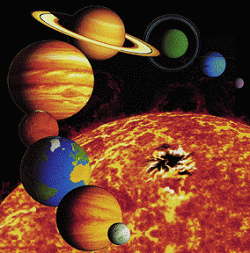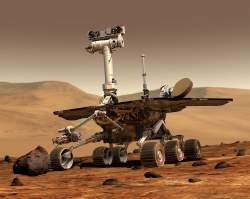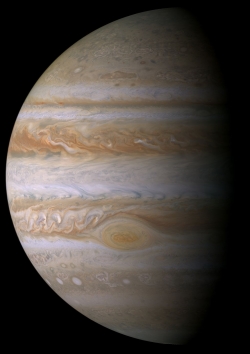Welcome to your neighborhood! It's filled with shining lights, big rocks, breezy places, a busy road, and asteroids. Oh, I should have told you I was talking about your SPACE neighborhood. It's a lot bigger than the neighborhood you live in here on Earth, but you can at least get to know its major parts. That way you can still feel at home, even when you are floating in space.
Every neighborhood on Earth has the same stuff in it: some houses, some streets, a store or two. Space neighborhoods also are a lot alike. A
solar system is a group of planets that move around a star. We move around our sun. Just as there are many neighborhoods, there are also many solar systems. Yours has eight planets, but we use to say it had nine. We will not talk about that here. It can tear space neighborhoods apart.

I wonder if our eight planets is a lot for a solar system?
Just as there are different kinds of houses and buildings in your neighborhood, there are also different kinds of planets in space. Let's start with the kind you live on. In your space neighborhood, the
rocky planets are the closest to the sun and are mostly made of, well, rock. How you can tell that Earth is a rocky planet? Stomp your foot on the ground. See? You did not go falling through to the middle.

Mars is a rocky planet too. That's why we can land a rover on it.
NASA/JPL/Cornell University, Maas Digital LLC, Public domain, via Wikimedia Commons
Wait, what other kind of planet could there be besides rock planets? If we can see it floating in space it has to be made of something you can stand on, right? Right? No, wrong. The rest of the planets are
gas giants, which are mostly made up of gas and not a lot of hard stuff. Their middles might be made of metal or rock, but most of the planet is gas that's pulled into a ball. Do not stomp on a gas giant. You might fall right into the middle. I need you here to finish reading this article.

Jupiter is a gassy planet. A rover would sink out of sight if it tried to land.
Just like your neighborhood, your space neighborhood also has a busy road. There are no cars though. The
asteroid belt is the part of our space neighborhood where more big rocks move around our sun than anywhere else. Even though there are lots and lots of asteroids, space is so big that this "road" is pretty empty. You probably will not be run over . . . or be able to catch a ride to the other side of your space neighborhood.
Your space neighborhood is a lot like the neighborhood you live in on Earth. Except that the space one spins around a sun, has rocky planets instead of houses, and gas giants instead of air, and the "roads" have asteroids instead of cars. Okay, maybe it's nothing like your neighborhood. It's still nice to know about our little corner of space that we call home, though.
References:
Science Daily. "Gas Giant" Science Daily, 2010. <
http://www.sciencedaily.com/articles/g/gas_giant.htm>
Science Daily. "Asteroid Belt" Science Daily, 2011. <
http://www.sciencedaily.com/articles/a/asteroid_belt.htm>